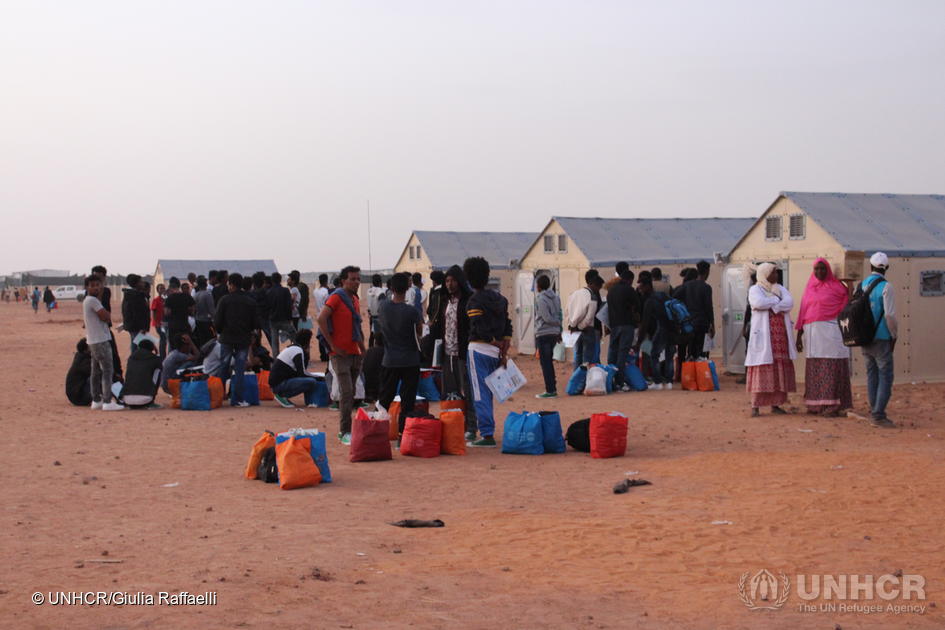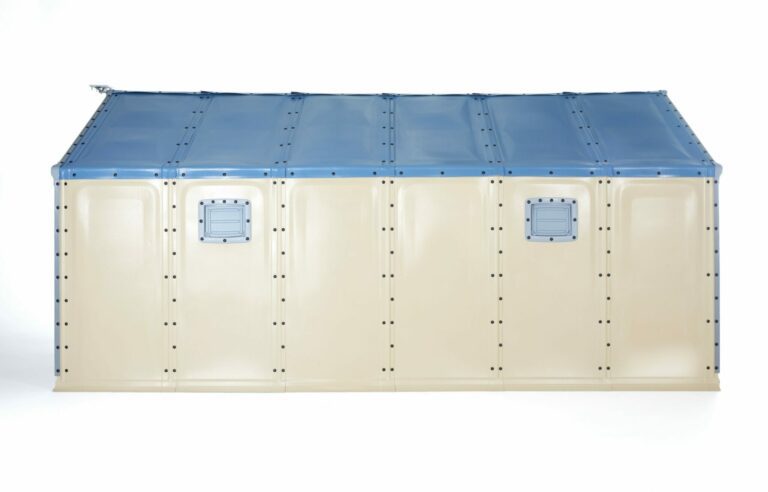Responding to the emergency in the Diffa Region with transitional shelter

Niger is home to over 240,000 refugees and more than 186,000 are internally displaced persons (IDPs). 2 regions in Niger are particularly affected by the armed conflicts and displacement and are currently in a state of emergency: the Diffa region which borders Nigeria and Chad and the South-West part of Niger, bordering Mali.
Today, there are over 250,000 displaced persons in the Diffa region, including 118,868 Nigerian refugees, over 25,000 returnees and 104,288 internally displaced persons. In 2018, the Government of Niger and UNHCR implemented a unique Emergency Transit Mechanism (ETM) to facilitate the evacuation of thousands of refugees detained in Libya and provide them with life-saving assistance and protection along the border with Mali, until they can be resettled.
In support of its operations in both of these regions, UNHCR has implemented over 1000 Better Shelter Relief Housing Units (RHUs) which serve primarily as temporary shelters and since 2018, the RHUs have been integrated in the ETM to facilitate the evacuation of refugees in the region.
Read more about this project here
“When there was conflict outside, the fighters would hide amongst us to protect themselves. They made us carry weapons and clean guns for them. Sometimes they would force people to fight.” Yasir (left) is recovering at UNHCR's Emergency Transit Mechanism (ETM) camp outside Niamey, with fellow Sudanese asylum-seekers, Mohydin and Ahmed. After fleeing persecution in Darfur, Yasir was illegally detained by a militia in Tripoli and kept in centres where he was routinely beaten and humiliated. ; Sudanese asylum-seeker, Yasir, arrived in Niger on an ETM evacuation flight out of Libya in April 2019. Yasir comes from an ethnic group associated with rebellion and freedom fighting in Darfur. Despite having no association with the group, he was targeted and tortured. He fled aged 11 to his father in Uganda, who had already left. But his mother could not come and when he was 15 he went back to see her. In Darfur, he was immediately arrested and tortured before being dumped on the streets. Trying to escape again, he ended up being smuggled by a network of traffickers to Kufra warehouse in Libya and coerced into paying a fee to be released. But instead of being freed, he was sold to another smuggler and taken to the infamous Bani Walid warehouse. When he tried to escape with a group of other Sudanese refugees, the smugglers shot through the door, killing seven refugees and injuring many more, including Yasir, who was shot in the foot. For punishment, they were tortured for four days, electrocuted in a swimming pool and had plastic burned onto their skin. All of this was filmed and sent to their families. After Bani Walid, Yasir was taken to Sabratha detention centre, then Gaser Ben Gashir, until after more than a year, UNHCR evacuated him in April 2019.
A group of refugees and asylum-seekers arrive at the Emergency Transit Mechanism (ETM) centre in Hamdallaye – 40 kilometres outside Niamey. ; A total of 120 evacuees were taken directly to the ETM facility where they underwent medical screening and were assigned to their Refugee Housing Units, equipped with beds and mattresses. Counselling was provided, as well as food. The UN Refugee Agency has been working to evacuate those trapped in appalling conditions in Libyan detention centres and neighbouring Niger has so far welcomed 2,913 of the evacuees. The majority (around 1,100) are hosted in the ETM centre in Hamdallaye, while the rest are staying in other hosting facilities in Niamey, due to their vulnerability and or health status. From here, durable solutions are found, including resettlement. Many evacuees are survivors of violence or torture.
Refugees recently evacuated from detention in Libya who made it out to Niger on UNHCR flights. For now the evacuees from Eritrea, Somalia, Ethiopia and Sudan are housed in a newly established emergency transit centre in Hamdallaye, near the capital Niamey in the country's southwest. ; In the 16 months up to April 2019, some 2,780 refugees held in detention in Libya had been evacuated to Niger under UNHCR measures known as the Emergency Transit Mechanism - ETM. As fresh Libyan fighting flared in April, the agency was able to evacuate 539 refugees but expressed concern about 3,000 still detained in Triploi. It called for faster resettlement plus additional capacity in Niger. Created in 2007, the ETM provides emergency protection and transit facilities for refugees at serious risk, pending resettlement to third countries.
Refugees recently evacuated from detention in Libya who made it out to Niger on UNHCR flights. For now the evacuees from Eritrea, Somalia, Ethiopia and Sudan are housed in a newly established emergency transit centre in Hamdallaye, near the capital Niamey in the country's southwest. ; In the 16 months up to April 2019, some 2,780 refugees held in detention in Libya had been evacuated to Niger under UNHCR measures known as the Emergency Transit Mechanism - ETM. As fresh Libyan fighting flared in April, the agency was able to evacuate 539 refugees but expressed concern about 3,000 still detained in Triploi. It called for faster resettlement plus additional capacity in Niger. Created in 2007, the ETM provides emergency protection and transit facilities for refugees at serious risk, pending resettlement to third countries.
There are currently over 600 refugees accommodated in UNHCR's new emergency transit centre in Hamdallaye, southwestern Niger. Refugees are provided with protection and assistance while awaiting resettlement in other countries. UNHCR recently evacuated them from Libya where they were held in detention. ; In the 16 months up to April 2019, some 2,780 refugees held in detention in Libya had been evacuated to Niger under UNHCR measures known as the Emergency Transit Mechanism - ETM. As fresh Libyan fighting flared in April, the agency was able to evacuate 539 refugees but expressed concern about 3,000 still detained in Triploi. It called for faster resettlement plus additional capacity in Niger. Created in 2007, the ETM provides emergency protection and transit facilities for refugees at serious risk, pending resettlement to third countries.
There are currently over 600 refugees accommodated in UNHCR's new emergency transit centre in Hamdallaye, southwestern Niger. Refugees are provided with protection and assistance while awaiting resettlement in other countries. UNHCR recently evacuated them from Libya where they were held in detention. ; In the 16 months up to April 2019, some 2,780 refugees held in detention in Libya had been evacuated to Niger under UNHCR measures known as the Emergency Transit Mechanism - ETM. As fresh Libyan fighting flared in April, the agency was able to evacuate 539 refugees but expressed concern about 3,000 still detained in Triploi. It called for faster resettlement plus additional capacity in Niger. Created in 2007, the ETM provides emergency protection and transit facilities for refugees at serious risk, pending resettlement to third countries.



